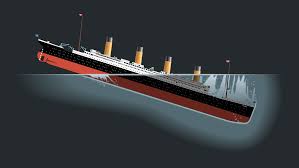The Weekly Reflektion 28/2024
Regulations governing HSE in the Norwegian petroleum industry contain risk- and performance-based requirements.The regulations are described as functional where the intention with each regulation is described and the responsible party, that is the operator and others participating in activities covered by the regulations, need to put in place specific solutions, processes and procedures that meet the intention. The guidelines to the regulations describe how the intention can be fullfilled and includes references to relevant standards, guidelines, etc. This is in contrast to prescriptive regulations where the regulator specifies what is required and how the requirement should be met.
Can you meet the requirements in the regulations and still not be safe?

RMS Titanic was a British ocean liner that sank on 15 April 1912. At the time she was the largest ship afloat. She was on her maiden voyage from Southampton, England to New York City, United States when she struck an iceberg in the North Atlantic. There were about 2,224 passengers and crew onboard and 1,496 died, the deadliest sinking of a single ship at the time. Titanic was operated by the White Star Line and was carrying some of the wealthiest people in the world, as well as hundreds of emigrants from the British Isles, Scandinavia, and elsewhere in Europe who were seeking a new life in the United States and Canada.
In 1912 the regulations for cargo ships required lifeboats with a capacity of twice the ship’s complement. The background for this requirement was that in the event of an accident that could compromise the integrity of the ship it could list to port or starboard. The logic was to have lifeboats available on each side that had sufficient capacity for the people onboard so that they could be launched safely. At that time the average displacement of ships was about 1400 tons. The UK Board of Trade regulations required that ships with a displacement of more than 10000 tones should be equipped with 16 lifeboats. Titanic had 16 lifeboats and also four additional collapsible boats that together gave a capacity of 1178. This was significantly less than the number of people on board and was a major factor for the number of people that died on that fateful day. After the Titanic struck the iceberg there was time for an orderly evacuation of the passengers and crew and most of the people could have been saved.
What went through the minds of the people involved in the design of the Titanic when they confronted the question of number of lifeboats and lifeboat capacity? Did they actually believe that the Titanic was unsinkable and that the number of lifeboats was of academic interest? It seems that the intention of the lifeboats on the Titanic was to satisfy the appropriate regulations and not to ensure evacuation and rescue of the people.
Our approach to prevention of Major Accidents involves a systematic process of identifying hazards, putting measures in place to manage these hazards, assessing the risks for people, the environment, value and reputation and finally having a process to assure that these risks are acceptable. Blindly following regulations and making statements that ‘our facilitycomplies’ is just not enough. Most of the people onboard the Titanic would not have questioned whether the ship was built in accordance with the applicable regulations. They would however have expected that the ship was ‘safe’.
